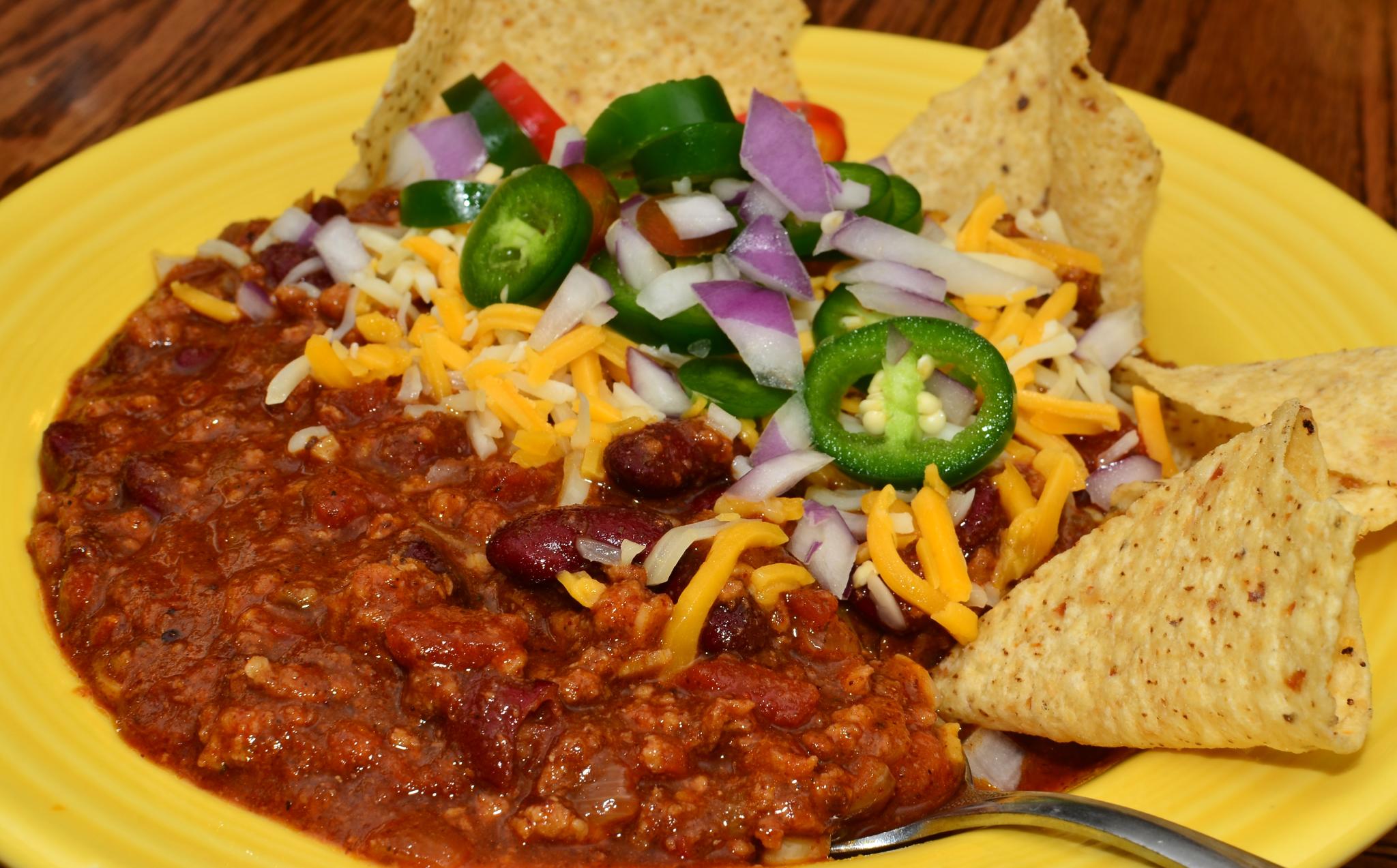|
Rattlesnake Bean
The rattlesnake bean is an heirloom cultivar of pole bean ('' Phaseolus vulgaris''). The pods are 6 to 8-inches long with purple markings, and the seeds are light brown with brown markings, still visible after cooking. They are named for the snake-like manner in which their pods coil around the vine. Rattlesnake beans favor hot weather such as in American Southeast and mid-Atlantic, though they are easy to grow elsewhere as well. They have an average to long time from germination to harvest, ranging from 60 to 90 days. They should be harvested frequently for increased yields. Plant grows up to ten feet, producing purple flowers before the pods. As fresh snap beans, they are sweet-tasting. Cooked dry beans have an intense flavor that combines well with strong spices, making them suitable for chili con carne Chili con carne (also spelled chilli con carne or chile con carne and shortened to chili or chilli; ), meaning " chili with meat", is a spicy stew containing chili peppers ... [...More Info...] [...Related Items...] OR: [Wikipedia] [Google] [Baidu] |
Phaseolus Vulgaris
''Phaseolus vulgaris'', the common bean, is a herbaceous annual plant grown worldwide for its edible dry seeds or green, unripe pods. Its leaf is also occasionally used as a vegetable and the straw as fodder. Its botanical classification, along with other '' Phaseolus'' species, is as a member of the legume family Fabaceae. Like most members of this family, common beans acquire the nitrogen they require through an association with rhizobia, which are nitrogen-fixing bacteria. The common bean has a long history of cultivation. All wild members of the species have a climbing habit, but many cultivars are classified either as ''bush beans'' or ''climbing beans'', depending on their style of growth. Best-known cultivar groups include the kidney bean, the navy bean, the pinto bean, and the wax bean. The other major types of commercially grown beans are the runner bean (''Phaseolus coccineus'') and the broad bean (''Vicia faba''). Beans are grown on every continent except Antarcti ... [...More Info...] [...Related Items...] OR: [Wikipedia] [Google] [Baidu] |
Heirloom Plant
An heirloom plant, heirloom variety, heritage fruit (Australia and New Zealand), or heirloom vegetable (especially in Ireland and the UK) is an old cultivar of a plant used for food that is grown and maintained by gardeners and farmers, particularly in isolated or ethnic minority communities of the Western world. These were commonly grown during earlier periods in human history, but are not used in modern large-scale agriculture. In some parts of the world, it is illegal to sell seeds of cultivars that are not listed as approved for sale. The Henry Doubleday Research Association, now known as Garden Organic, responded to this legislation by setting up the Heritage Seed Library to preserve seeds of as many of the older cultivars as possible. However, seed banks alone have not been able to provide sufficient insurance against catastrophic loss. In some jurisdictions, like Colombia, laws have been proposed that would make seed saving itself illegal. Many heirloom vegetables have k ... [...More Info...] [...Related Items...] OR: [Wikipedia] [Google] [Baidu] |
Germination
Germination is the process by which an organism grows from a seed or spore. The term is applied to the sprouting of a seedling from a seed of an angiosperm or gymnosperm, the growth of a sporeling from a spore, such as the spores of fungi, ferns, bacteria, and the growth of the pollen tube from the pollen grain of a seed plant. Seed plants Germination is usually the growth of a plant contained within a seed; it results in the formation of the seedling. It is also the process of reactivation of metabolic machinery of the seed resulting in the emergence of radicle and plumule. The seed of a vascular plant is a small package produced in a fruit or cone after the union of male and female reproductive cells. All fully developed seeds contain an embryo and, in most plant species some store of food reserves, wrapped in a seed coat. Some plants produce varying numbers of seeds that lack embryos; these are empty seeds which never germinate. Dormant seeds are viable seeds that do ... [...More Info...] [...Related Items...] OR: [Wikipedia] [Google] [Baidu] |
Chili Con Carne
Chili con carne (also spelled chilli con carne or chile con carne and shortened to chili or chilli; ), meaning " chili with meat", is a spicy stew containing chili peppers (sometimes in the form of chili powder), meat (usually beef), tomatoes and often pinto beans or kidney beans. Other seasonings may include garlic, onions, and cumin. The dish originated in northern Mexico or southern Texas. Geographic and personal tastes involve different types of meat and other ingredients. Recipes provoke disputes among aficionados, some of whom insist that the word ''chili'' applies only to the basic dish, without beans and tomatoes. Chili con carne is a common dish for cook-offs, and may be used as a side, garnish, or ingredient in other dishes, such as soups or salsas. Origins and history In writings from 1529, the Franciscan friar Bernardino de Sahagún described chili pepper-seasoned stews being consumed in the Aztec capital, Tenochtitlan, now the location of Mexico City. The use of b ... [...More Info...] [...Related Items...] OR: [Wikipedia] [Google] [Baidu] |
.jpg)


